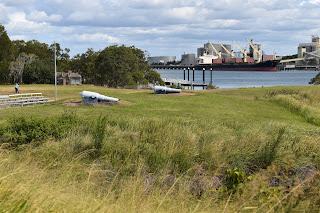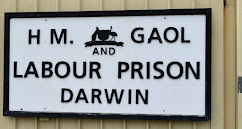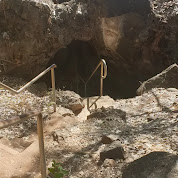A Leap Back in Time to Visit Fort Lytton.
With restrictions easing we are allowed to travel out into the local area. The two green frogs searched for a place to visit that was both different and unusual to share with you. Well, where did you go, I hear you ask? We visited Fort Lytton, on the southern banks of the Brisbane River, in the Fort Lytton National Park.
Before entering the Park, you need to make sure of the park opening times and if you want to go and have a volunteer guide you around, which is interesting as they can give you more information than the Self Guiding Trail pamphlet that we used on our visit. At this time there were no guides to assist us, though we still had a great time and learnt more about our local history. According to the website the Historical Association provides FREE guided tours which, if you are a family and need an outing without the expense, is a good tour. Take a picnic with you as there are plenty of areas of green grass and shade trees to sit under.
 |
| grass area for picnic Fort Lytton |
 |
| museum pieces |
 |
| twin 6 pounder gun |
The self-guide leaflet shows you where to start. With a short walk around, you can start with number one and move on from there. As for us, we walked down to the water and looked at the searchlight emplacements. From there we walked back over the moat and made our way around towards the gate of the Fort. There are some buildings left standing that now house items that were used in the Army. A motor bike, guns, flags, radio under camouflage, all worth a closer look when the doors are open again to the public.
Through the gates of the Fort and you enter the parade ground and the buildings that once housed ammunition, bullets and mines, detonators, and the men and women that worked there to help keep Brisbane safe during the war.
At the top of a mound is a twin 6 pounder gun that was installed in 1943, it was able to fire up to 80 rounds per minute. This gun was fired remotely by the Battery Commander and two assistants, which surprisingly were sometimes women. This we found interesting, though knowing that many women had important roles during the war it should not be too surprising. The command post was behind the gun but is no longer there. Only the concrete supports remain.
The test room and Submarine mine observation cell was used to test electrical circuits associated with submarine mines. The mines, which were submerged in the river channel near the fort and could be electrically fired from the observation cell. The casements one and two, have steel doors and windows, this is where the gun crew lived. The steel was there for the protection of the men within.
There are many different guns, buildings and items from the time of war displayed in these buildings. Not many people know that Brisbane like other cities in Australia have these sites where people helped to defend Australia and its citizens. If the walls could talk then it would tell us more of what life was like back, then.
We would definitely recommend visiting Fort Lytton and make sure that you take the time to wander around and read the information.
 | ||
underground walkway
🐸🐸Will you enjoy visiting this part of Australian history and what will you find?
|




Comments
Post a Comment